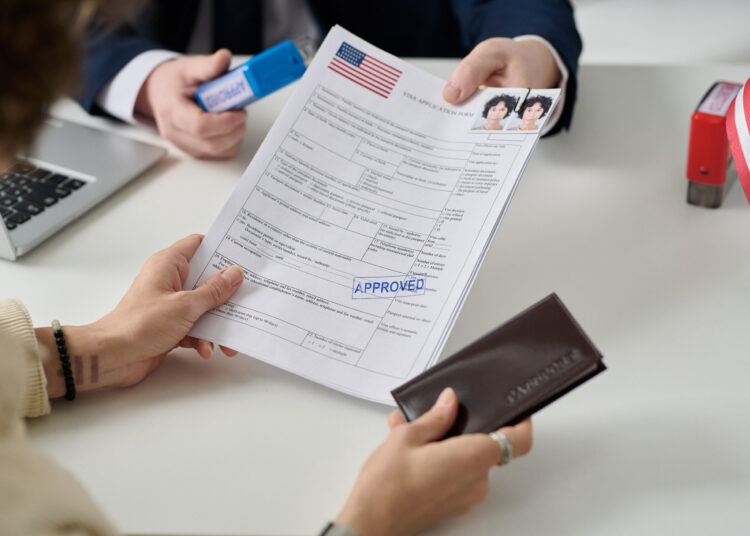The EB-5 Immigrant Investor Program has long been a popular pathway for foreign nationals seeking U.S. residency through investment. However, recent discussions have raised concerns about potential backlogs in reserved EB-5 visa categories, particularly for applicants in targeted investment areas (TEAs), including rural and high-unemployment regions. As demand increases, these backlogs could significantly impact processing times and approval rates.
This article explains the potential causes of backlogs, their implications, and strategies for investors navigating the EB-5 process.
Understanding Reserved EB-5 Visa Categories
The EB-5 program offers U.S. residency to foreign nationals who invest a minimum of $800,000 in TEAs or $1.05 million in non-TEA areas, provided their investment creates at least 10 full-time jobs for U.S. workers. In 2022, the EB-5 Reform and Integrity Act introduced new reserved visa categories aimed at prioritizing rural, high-unemployment, and infrastructure projects.
These reserved categories are designed to direct investment toward underserved communities, but they also come with annual caps, which can contribute to backlogs when demand exceeds the available visa slots.
Key Factors Contributing to Backlogs
1. High Demand for Rural and High-Unemployment TEAs
Since the introduction of reserved categories, rural and high-unemployment TEAs have become more attractive to investors due to lower investment thresholds and faster potential approval times. However, the growing demand for these reserved spots may lead to bottlenecks.
2. Annual Visa Caps
The U.S. government allocates a limited number of EB-5 visas each year, with specific quotas for reserved categories. If applications exceed the quota, applicants must wait until the next fiscal year for visa availability.
3. Country-Specific Limits
The EB-5 program enforces a per-country cap, which means no single country can receive more than 7% of the total visas issued annually. This often leads to backlogs for countries with high demand, such as China, India, and Vietnam.
4. Application Processing Delays
The U.S. Citizenship and Immigration Services (USCIS) and the Department of State continue to face delays in processing EB-5 applications due to staffing shortages and pandemic-related disruptions, contributing to longer wait times for all applicants.
Implications of Potential Backlogs
1. Longer Waiting Times for Investors
Applicants in oversubscribed categories may face waiting times of several years before receiving their conditional green cards. This can delay the ability of investors and their families to relocate to the U.S.
2. Risk of Policy Changes
Prolonged backlogs increase the risk of policy changes that may affect eligibility requirements or investment thresholds, potentially complicating applications that are still in the queue.
3. Impact on Project Timelines
Investors tied to specific projects may face uncertainty if their visa approval is delayed, as some projects may be time-sensitive or require a steady flow of capital.
Strategies for EB-5 Investors
1. Choose Under-Subscribed Categories
Investors may consider focusing on less-saturated categories, such as rural TEA projects, to avoid long waiting times. These categories often have fewer applicants and may provide faster processing.
2. Monitor Visa Bulletins
Staying up-to-date with the U.S. Department of State’s monthly Visa Bulletin can help investors understand the current priority dates and available visa slots.
3. Work with Experienced Advisors
Partnering with an experienced EB-5 immigration attorney and investment advisor can help investors navigate the complexities of the process, avoid mistakes, and make informed decisions about project selection and filing strategies.
4. Consider Alternative U.S. Visa Options
For some investors, alternative visa categories, such as the E-2 Treaty Investor Visa or L-1 Visa, may offer faster entry into the U.S. while waiting for EB-5 processing.
Future Outlook for the EB-5 Program
While potential backlogs in reserved categories are a growing concern, the EB-5 program remains an attractive option for foreign investors due to its pathway to permanent residency and eventual U.S. citizenship. The U.S. government continues to monitor the program and may introduce measures to alleviate processing delays, such as increasing visa caps or improving USCIS infrastructure.
The continued success of the EB-5 program will depend on balancing demand with efficient processing and maintaining investor confidence. Prospective applicants should remain informed and proactive to maximize their chances of a successful outcome.
Potential backlogs in reserved EB-5 visa categories present both challenges and opportunities for investors. Understanding the factors contributing to delays and adopting smart strategies can help applicants navigate the complexities of the program. With careful planning and expert guidance, the EB-5 program remains a viable and rewarding path to U.S. residency for global investors.













